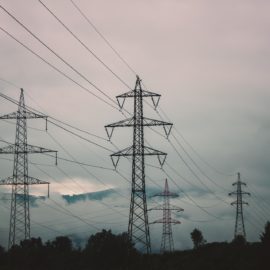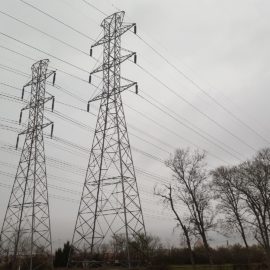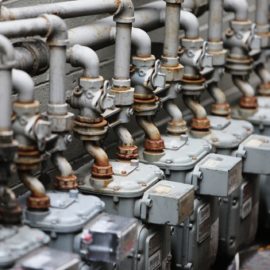
Photograph provided by Jefferson Davis Electric Co-op
We hear here that we need to storm protect our electrical grid. We are not doing that yet a rural area is. We can learn.
When Hurricane Laura made landfall in the small town of Cameron on Louisiana’s southwestern coast on August 27, 2020, there was little that its 150 mph winds left untouched. The powerful storm tore the roofs off of homes, moved entire buildings and snapped utility poles like twigs. For rural residents, this meant losing power, in some cases for months. “It hit exactly where our system is,” Michael Heinen, general manager of Jefferson Davis Electric Co-op (JDEC), said of Laura. The rural power company is one of the largest in the state by territory, serving households and businesses across five parishes. “There was not a line section that was not affected,” Heinen said.
nola.com
That sounds like us after Ida. Entergy says they want to but make us pay.
Trying to restore power to its 7,500 members as quickly as possible, the electric co-op called in help from fellow rural power providers across the country. A tent city was built at Chennault airport in Lake Charles, housing 800 lineworkers at a time tasked with emergency repairs. Then, less than two months after Laura tore the utility’s grid to shreds, came Hurricane Delta, destroying what had been rebuilt so far. “We took a step back and said: Let’s not do the same thing again; we’ll get the same results,” Heinen said of the co-op, which at that point had seen its system severely damaged by four hurricanes over the span of 15 years. This last time, JDEC spent at least $297 million on emergency repairs, according to worksheets provided to FEMA for reimbursement.

Photographs provided by Jefferson Davis Electric Co-op
The Co-op is now spending money to harden the wires.
Now, more than two years after the storms, JDEC is preparing to spend another $340 million to harden its system, making it less susceptible to hurricane damage. Because of their status as non-profits, rural electric co-ops, unlike investor-owned utilities, qualify for public assistance from the federal government following a disaster. The total of more than half a billion dollars would come from FEMA funds. Working with a team of consultants, the co-op is rebuilding its Cameron transmission line, replacing wooden poles with ones made from steel, elevating substations to avoid flooding and installing transmission lines that carry a higher voltage. In this configuration, the new system should be able to withstand winds of up to 160 mph. The work comes as the population of Cameron Parish continues to drop, but there are other considerations related to the region’s growing energy sector.
The same suggestions we have been given.
Founded following the Franklin Roosevelt-era rural electrification program, rural electric co-ops provide power to sparsely populated areas deemed unprofitable by investor-owned utilities. But long gone are the days when rural co-ops’ main task was keeping the lights on at the farmhouse. “We need to have a hardened system because of the critical infrastructure that is down there,” Heinen said, referring to the oil and gas pipelines running through the co-op’s southernmost territory. Five of its substations along the coast, which provide electricity to Shell and BP pipelines, among others, are currently still powered by generators. This comes at a cost of roughly $4.5 million per month, a bill footed by the federal government. With the growing demand for LNG and plans for more export facilities to be built in the region, the newly hardened infrastructure will “serve not only what is there, but what may be coming in the future,” Heinen noted. JDEC’s system has provided power for the construction phase of Venture Global’s Calcasieu Pass LNG export facility and, in its plans submitted to the Federal Energy Regulatory Commission, the company said it was planning to tap into the rural grid again for the construction of its adjacent CP2 terminal, pending approval.
These words that follow we need to take for action.
Creating an infrastructure for power delivery that can withstand increasingly destructive storms lays the groundwork for a successful recovery, said Amy Bailey, director of climate resilience and sustainability at the Center for Climate and Energy Solutions, a Virginia-based think tank. “By preparing and investing in resilience like that, the community can strengthen their finances, they can attract more investors, improve the livability for folks there,” Bailey said. “If the electricity system itself is vulnerable, that leads to a lot of community-level, economy-wide risk.” Economic impacts and investment potential aside, Laura’s aftermath showed the risks to human life that a loss of power brings. Of the 31 storm-related deaths reported by the Louisiana Department of Health in January 2021, nine were caused by carbon monoxide poisoning, commonly caused by the improper use of portable generators. Another nine were heat-related. “It’s incredibly dangerous,” Bailey said of the lack of power following a destructive storm, especially when paired with extreme heat, as is often the case in southern Louisiana.
We cannot beat Mother Nature but we can stand up to her.
Even the most resilient system doesn’t provide a guarantee that power won’t be lost during the next destructive storm. “Everything man-made has a tendency to fail at some point,” said Addie Armato, CEO of the Association of Louisiana Electric Cooperatives. “There’s always projects and there’s always improvements being made, but sometimes, Mother Nature wins.” But the new system, as it’s designed, will be capable of supplying power throughout its grid, even if individual substations should falter, according to Heinen and the co-op’s hired team of engineers. “You’ll have a system that is way more hardened, resilient and able to withstand storms,” Heinen said. “Let’s build it bigger and better so we don’t have to do this every time.” JDEC and its consultants are hoping to sign construction contracts in the first quarter of the year, with work expected to start in the fall, a gap attributed to long lead times for parts and materials. If all goes according to plan, the new-and-improved infrastructure should be up and running by June 2025, consultants estimate.
Entergy serves more people but this small Co-op has the right idea and is doing what we need to do but are not.



